So since we have already accomplished Part One: setting aside some time to plan, checking our grocery circulars and maintaining a Recipe Arsenal, that means it is business time (and if this song is now in your head I apologize — or do I? MUAHAHAHA!) So, hey — let’s get to planning some meals, shall we? It only takes a few critical steps.
1. Take Inventory of Perishable Items On Hand
Is your fridge overflowing with lettuce like mine was this weekend? Salad will definitely be making an appearance! Do you have produce that will turn into a science experiment if it is not consumed in the next week? All of a sudden you have Monday’s dinner side dish right in front of you, no? Food waste is one of the most frustrating ways to throw money away and there’s no reason it should happen. Check the status of your veggies. See what protein you have in the freezer. Then connect the dots to something you’ve been eyeing in your Recipe Arsenal and voila! Nothing goes bad, and you feel like a creative genius. Win-win.
2. Consult Your Schedule and Be Realistic

This is one of the most commonly missed steps in Meal Planning. Listen, we all want to sit down to a 4 course meal that includes homemade Beef Wellington after a long Monday, but COME ON. If you are going to be working late, trying to hit the gym and stopping by the post office on way home from work, don’t plan the world’s most complicated meal. You are setting yourself up for failure and who wants to spend time planning that? I actually have two tabs in my Recipe Arsenal for Slow Cooker Meals and 15 Minute Dinners (Breakfast for Dinner, anyone?) because we have quite a few of those weeknights around our house, and that’s ok. Acknowledge it and plan for it.
The point of meal planning isn’t to get a meal on the table every night that photographs right out of Food & Wine Magazine (though when you get in the groove of things, heck, it could happen!) The point is to spend minimal time getting that food on the table while still eating well EVERY NIGHT. And knowing what to expect with your schedule is critical to making that happen.
3. Choose Your Recipes and Set Your Them Aside
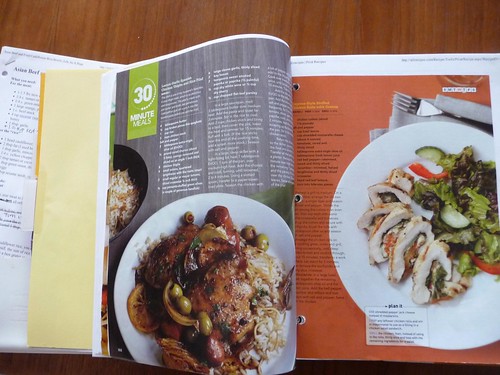
So at this point you’ll choose some meals that will work with your schedule and the food you have on hand. (Obviously some recipes will require ingredients you don’t have on hand — we’ll get to that next!) Print those recipes from the internet or pull the magazine articles out of your Recipe Arsenal and store them in the front pocket of that binder. Bonus points if you pay attention to detail and line them up in the order they’ll be consumed. That way there is no searching for the recipe at each meal — it’s all stacked neatly (and potentially in order) within your reach when it’s time to cook.
A quick note:The reason I’m so pro-paper recipes (even though that seems so old school) is because I find it helpful to make notes on my recipes when I’m cooking. Sometimes it’s about a change I’ve made, or something that didn’t go exactly as written. This way each time I make a particular recipe I get closer and closer to perfecting/customizing it. Perhaps it’s because Garrett and I are giant food nerds and like to sit around while we eat saying things like “You know what would make this perfect? The slightest pinch of red pepper flakes!” (holding our pinkies up in the air, of course) You don’t have to be that dorky. But in all seriousness, if you don’t have a recipe on paper, you can’t make any amendments, so take that tip for what it’s worth.
So we’ve chosen recipes that use up our perishable food but unless you have a grocery fairy (WHY, OH WHY DON’T I HAVE A GROCERY FAIRY?) you still need to hit up the grocery store for some new ingredients. I mention this because I want to share these two grocery list game changers that I read in an Ina Garten cookbook once.
The first is when you write an item you need on your list, note how much you need. Instead of writing “Green Onions”, write Green Onions (1/2 Cup). That way you make sure you get the right amount. I can’t tell you how many times I’ve made a list that included something like “Onions,” picked up 2 or 3 at the store and then half way through the week I run out. This will save you a mid-week trip back to the store.
The second is after you write down all your ingredients you need to purchase, take the time to rewrite that list organized by categories. Divide your piece of paper into headings according to how your grocery store is organized: Meat, Dairy, Produce, Canned Items, etc. Then add your list items under each heading grouped together for efficient shopping!
Life changing!
Once you get your shopping done, all that is left to do is enjoy your delicious meals all week long. And with a few minutes of planning one day per week, this can be a reality!
Bon Appetit!
****
If that was helpful, wanna see What’s In My Fridge?
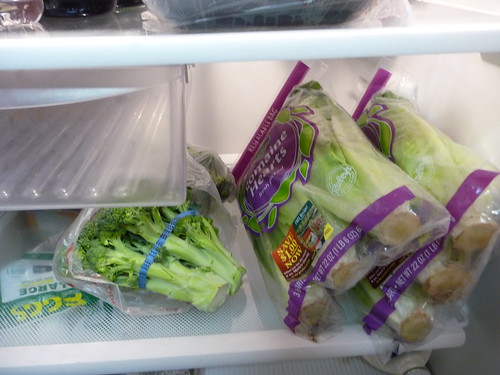
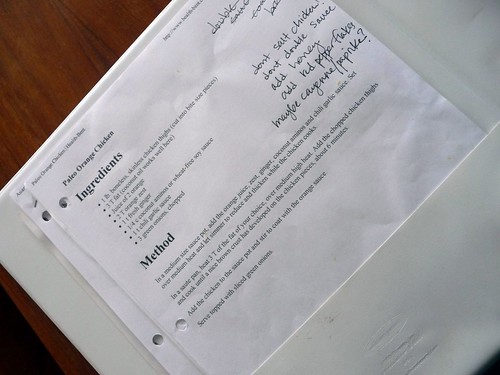
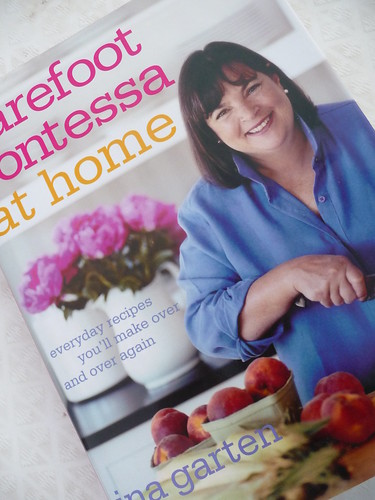
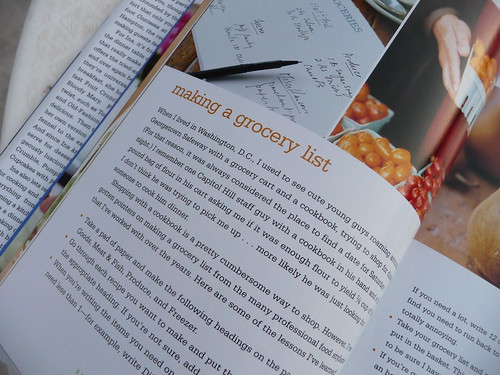

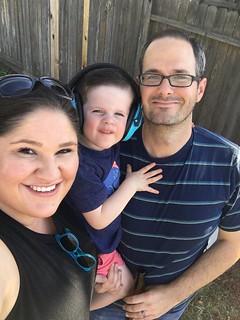
This is brilliant – thanks for sharing your tips! I am trying to get back on this bandwagon and this will really help.
Especially writing down how MUCH you need, not just WHAT (i.e., onions). Why haven’t I ever thought of that?
Right??? I mean, such a life changer. Maybe if we had thought of it, we’d also live in giant houses in the Hamptons like Ina Garten! 😉
These are some great tips-I can see the light at the end of the tunnel and it isn’t a train coming at me. Makes shopping and cooking fun….looking forward to my next trip to the grocery store!
Glad you think they are helpful. Wish I could say they make me “look forward” to the grocery store, but at least it makes the grocery store feel more manageable. 🙂
YES! I would add that knowing what’s in your pantry is important too. I’m forever buying crap I don’t need (black beans, anyone?) because I can never remember what is in that black hole.
This weekend I’m pulling everything out, making a list of how much I have, then uploading it onto a Google doc somewhere so I can reference it on the fly. Tired of buying fish sauce.
A google doc of your pantry inventory? Oh that just warms my anal-retentive heart! 😉